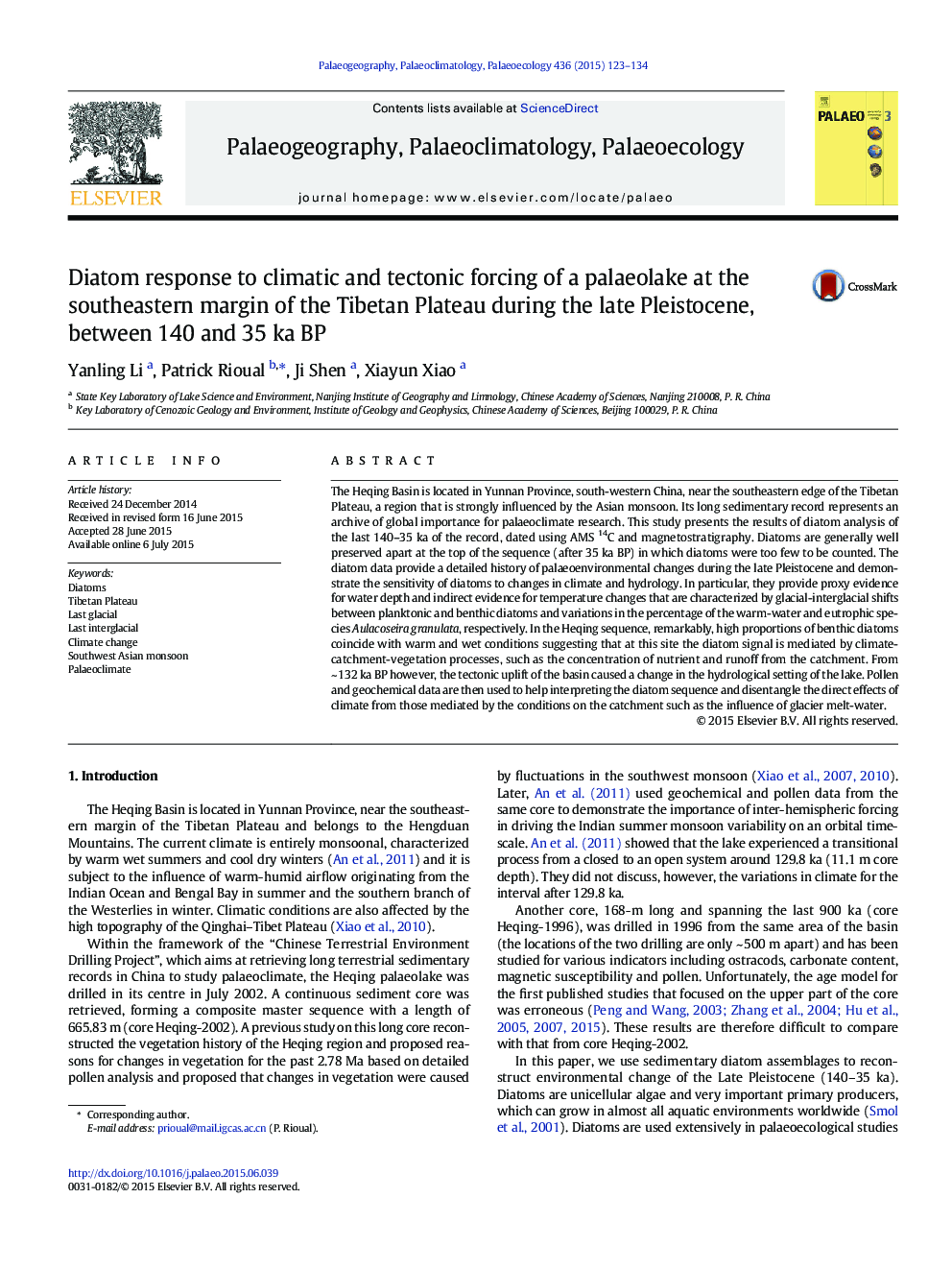| کد مقاله | کد نشریه | سال انتشار | مقاله انگلیسی | نسخه تمام متن |
|---|---|---|---|---|
| 4465901 | 1622154 | 2015 | 12 صفحه PDF | دانلود رایگان |

• We present a Late Pleistocene sedimentary diatom record from southwestern China.
• Tectonic uplift of the basin changed the lake hydrology at ~ 132 ka BP.
• Diatom response became mediated by influx of nutrient-rich glacier melt-water.
• There is no simple relationship between monsoonal precipitation and lake level.
The Heqing Basin is located in Yunnan Province, south-western China, near the southeastern edge of the Tibetan Plateau, a region that is strongly influenced by the Asian monsoon. Its long sedimentary record represents an archive of global importance for palaeoclimate research. This study presents the results of diatom analysis of the last 140–35 ka of the record, dated using AMS 14C and magnetostratigraphy. Diatoms are generally well preserved apart at the top of the sequence (after 35 ka BP) in which diatoms were too few to be counted. The diatom data provide a detailed history of palaeoenvironmental changes during the late Pleistocene and demonstrate the sensitivity of diatoms to changes in climate and hydrology. In particular, they provide proxy evidence for water depth and indirect evidence for temperature changes that are characterized by glacial-interglacial shifts between planktonic and benthic diatoms and variations in the percentage of the warm-water and eutrophic species Aulacoseira granulata, respectively. In the Heqing sequence, remarkably, high proportions of benthic diatoms coincide with warm and wet conditions suggesting that at this site the diatom signal is mediated by climate-catchment-vegetation processes, such as the concentration of nutrient and runoff from the catchment. From ~ 132 ka BP however, the tectonic uplift of the basin caused a change in the hydrological setting of the lake. Pollen and geochemical data are then used to help interpreting the diatom sequence and disentangle the direct effects of climate from those mediated by the conditions on the catchment such as the influence of glacier melt-water.
Journal: Palaeogeography, Palaeoclimatology, Palaeoecology - Volume 436, 15 October 2015, Pages 123–134